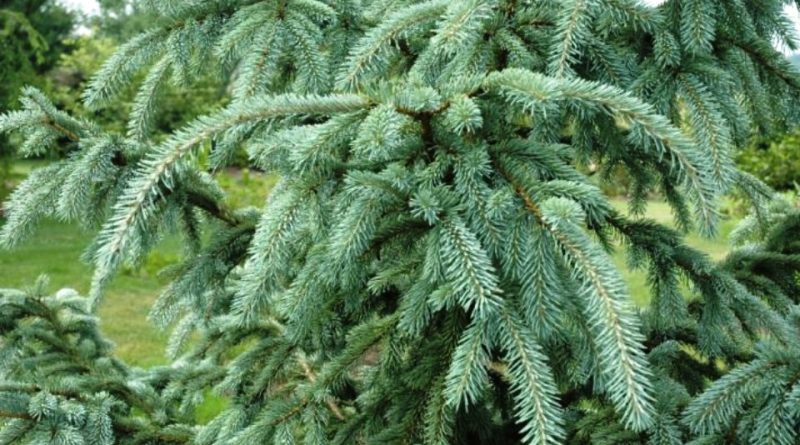Picea aurantiaca
Picea aurantiaca
The Orange spruce (Picea aurantiaca Mast., 1906) is an arboreal species belonging to the Pinaceae family.
Systematics –
From a systematic point of view it belongs to:
Eukaryota Domain,
Kingdom Plantae,
Pinophyta Division,
Pinopsida class,
Order Pinales,
Pinaceae family,
Genus Picea,
P. aurantiaca species.
The term is synonymous:
– Picea asperata var. aurantiaca (Mast.) Boom.
Etymology –
The term picea is the Latin name of the wild pine in Virgil and Pliny.
The specific Aurantiac epithet derives from Latin and means orange, referring to the color of the twigs.
Geographic Distribution and Habitat –
Picea aurantiaca is a conifer native to western Sichuan, in the mountains west of Kangding, China.
Its natural habitat is that of the steep mountain slopes at the edge of the forests where it grows in a cold subalpine climate from 2600 meters up to about 3800-4000 meters of maximum altitude. It can be found together with Picea likiangensis var. rubescens, Abies squamata, Larix potaninii and birch trees.
Description –
Picea aurantiaca is a conifer that grows in an arboreal form up to 20-25 m, with a slender and conical crown, open and with a single straight trunk that can reach 0.7 m in diameter and short, horizontally developing or curved branches of the first order downwards, while those of the second order are thick, rigid and not curved.
The bark is pale gray in color which over time becomes deeply furrowed and divided into irregular plates.
The shoots are rigid, thick, of an orange or yellowish-orange color, then gray, first pubescent then glabrous, with a smooth and grooved surface; the pulvins are well developed, 1-2 mm, at right angles on the shoots.
The leaves are needle-like, more or less comb-like, 0.8-1.8 cm long, linear, straight or curved, quadrangular-rhombic, pungent; they have stomata on both sides, arranged on 3-6 lines in 4 bands. Young needles are bluish-green, then gray-green. The buds are ovoid-conical, 4-6 mm, covered by pulvins at the base, resinous; the pearls are triangular, obtuse or acute, of a yellowish-brown color, persisting for several years.
Male strobili are axillary, 1.5-2 cm long, first reddish, then yellow with pollen.
The female cones are initially erect, then hanging, cylindrical-oblong, sessile or with short peduncle, 10-12 cm long and 4-4.5 cm broad, bright red when immature, then brown-reddish, with obtuse tip. The macrosporophylls are ovoid-rhombic, with rounded apex, 2.5 cm long, with a striated, luminous, glabrous surface, with an eroded and indented upper margin. The bracts are ligulate, 2-4 mm long, entirely hidden. The seeds, oboival-conical, are brown, 3-4 mm long, with a winged part 12-14 mm long, of a yellowish-brown color.
Cultivation –
Picea aurantiaca is a plant that grows naturally in relatively steep mountain areas and at altitudes up to 4000 m a.s.l.
In these areas it forms wooded systems often in intercropping with Picea likiangensis var. rubescens, Abies squamata, Larix potaninii and birch trees.
To be cultivated, the plant needs not hot climates, with temperate summers.
Propagation occurs by seed.
Customs and Traditions –
Picea aurantiaca is a closely related species to Picea asperata and is sometimes treated as one of its varieties.
The botanist Wilson, who first collected this species, noted during his field investigations that “spruce (Picea aurantiaca) is a particularly beautiful species, with square, dark green needles on extended branches and clustered red-brown pendulous cones. near the top of the tree “(Wilson 1913).
It is distinguished from P. asperata for its glaucous and more robust foliage and for the glabrous and glaucous twigs and for the larger seed scales (2-2.4 × 1.5-1.8 cm, against 1.2-2 × 0.8-1.6 cm in P. asperata) and the various vegetative buds.
The most common names are: Orange fir, 白皮 云杉 baipi yunshan (lit. Fir with white bark).
This plant grows in a small area west of Kangding in China. Forests in this area are under increasing pressure due to indiscriminate logging. Populations have decreased and, as yet, there is no well-regulated protection for the species (Conifer Specialist Group 1998).
Among its uses it should be remembered that its wood is probably used in the paper industry and in construction, as there is no detailed information as in China this species is considered a variety of P. asperata. In Europe it is very rare in botanical gardens.
The exploitation of its wood with consequent deforestation was and remains partially (after the restrictive laws enacted in 1998) the greatest risk for the species, together with forest fires, with an ascertained population decline; furthermore, the primary area is limited to about 50 km² of territory. For this reason it is classified as Endangered Species on the IUCN Red List.
Preparation Method –
Picea aurantiaca is a conifer whose food or pharmaceutical uses are not known; instead, the use of its wood is supported, which leads this species to be classified in the IUCN Red List.
Guido Bissanti
Sources
– Acta Plantarum – Flora of the Italian Regions.
– Wikipedia, the free encyclopedia.
– GBIF, the Global Biodiversity Information Facility.
– Useful Tropical Plants Database.
– Conti F., Abbate G., Alessandrini A., Blasi C. (ed.), 2005. An annotated checklist of the Italian vascular flora, Palombi Editore.
– Pignatti S., 1982. Flora of Italy, Edagricole, Bologna.
– Treben M., 2000. Health from the Lord’s Pharmacy, Advice and experiences with medicinal herbs, Ennsthaler Editore.
Photo source:
– https://conifersociety.org/conifers/picea-asperata-aurantiaca/
– http://sweetgum.nybg.org/images3/3592/649/00888200.jpg
Warning: Pharmaceutical applications and alimurgical uses are indicated for informational purposes only, they do not represent in any way a medical prescription; therefore no responsibility is taken for their use for curative, aesthetic or food purposes.


